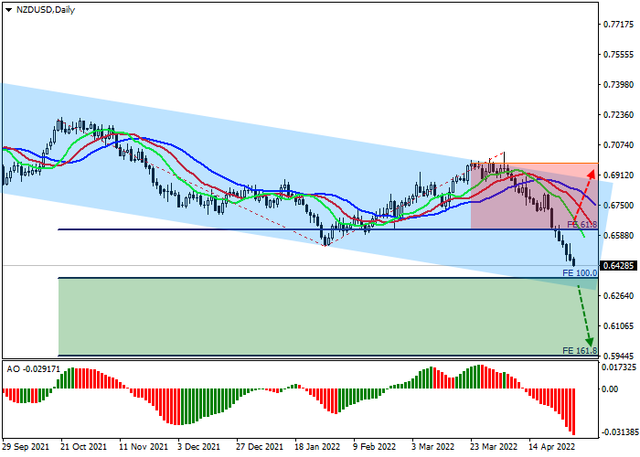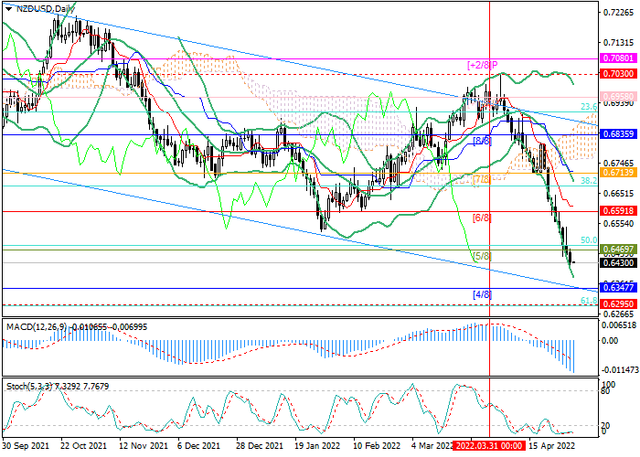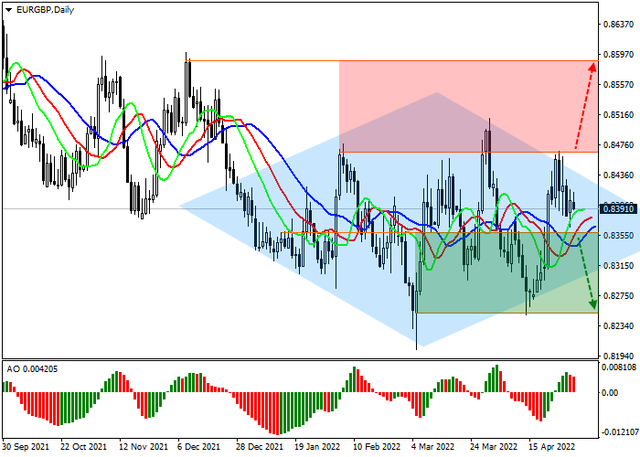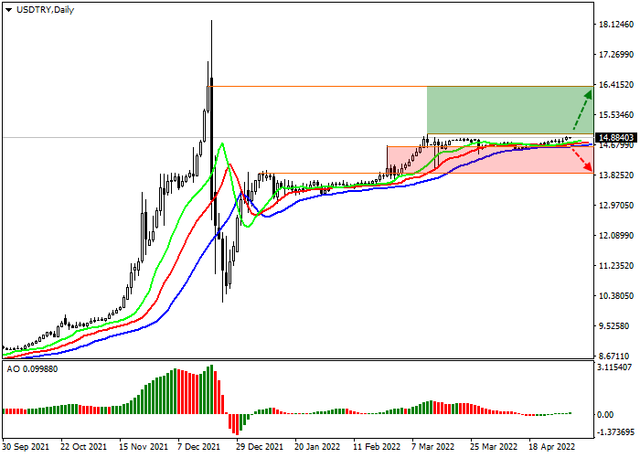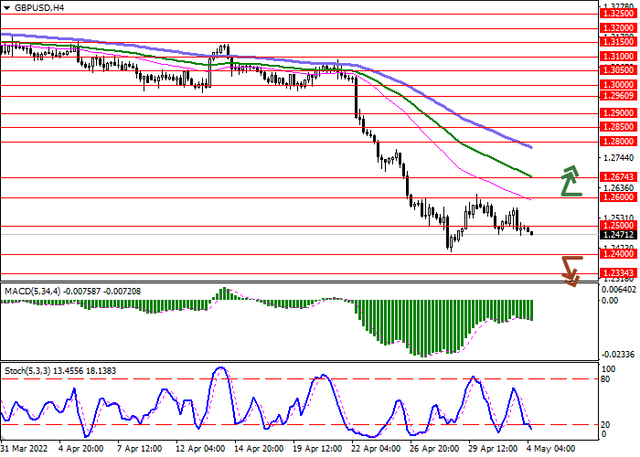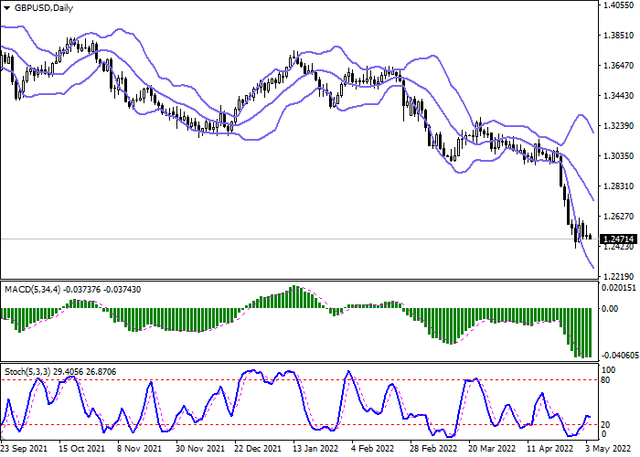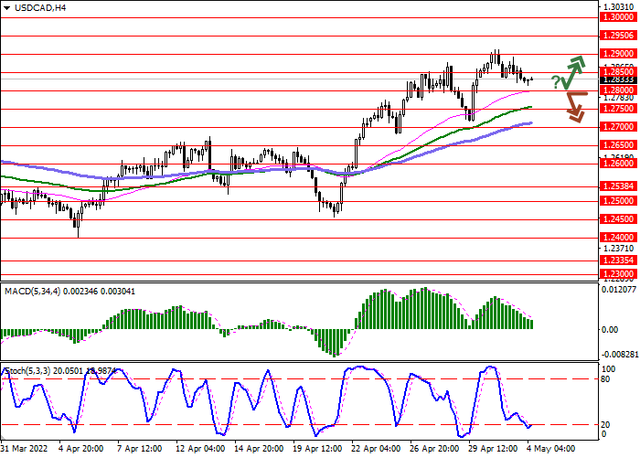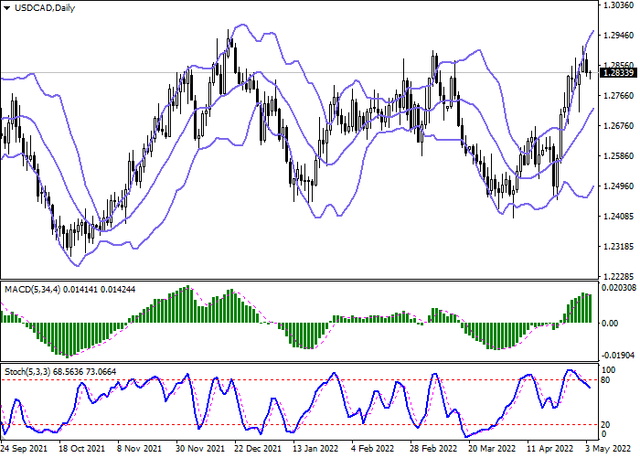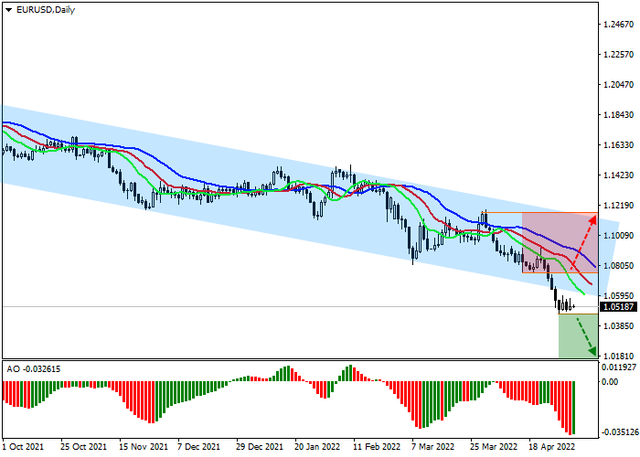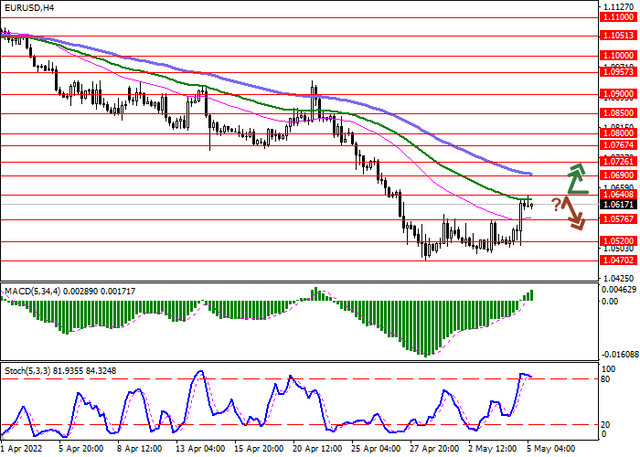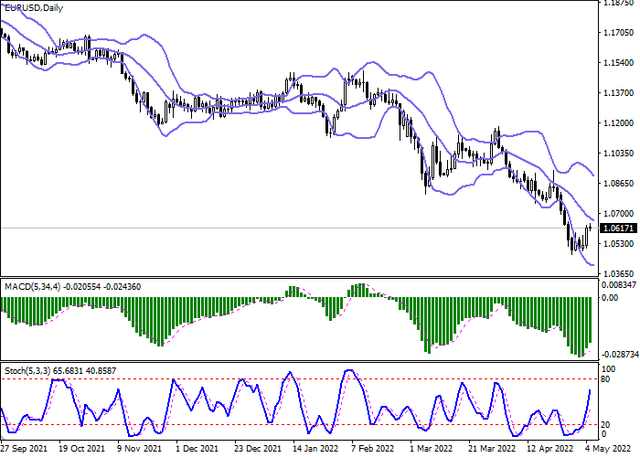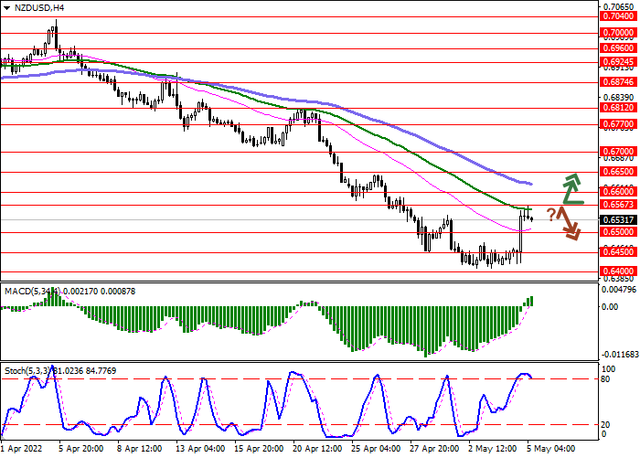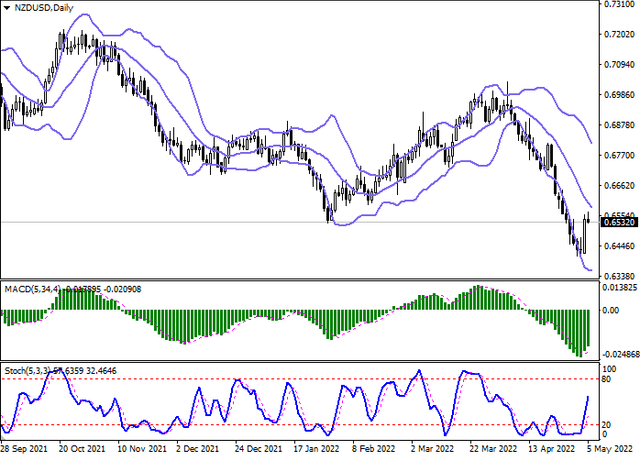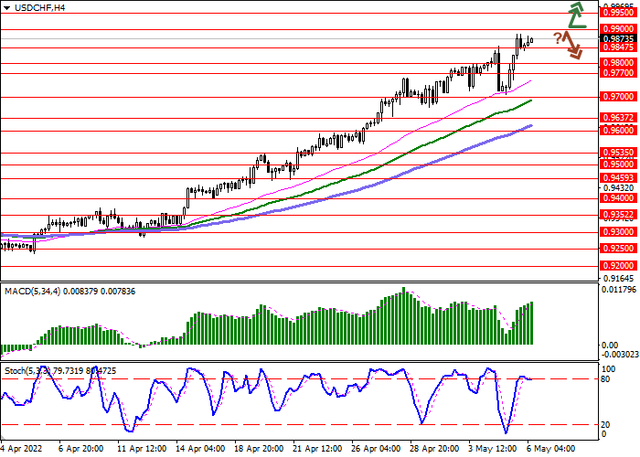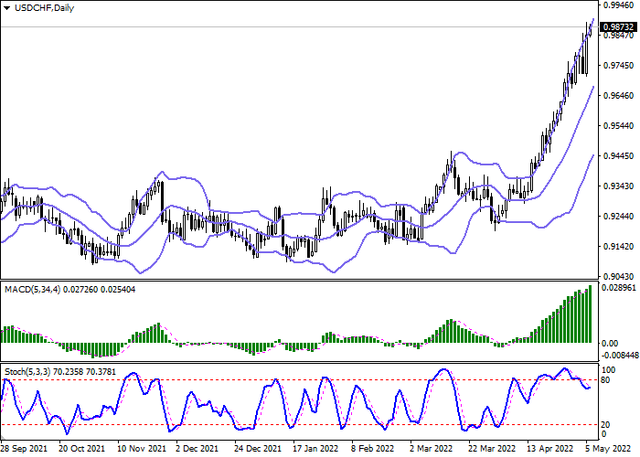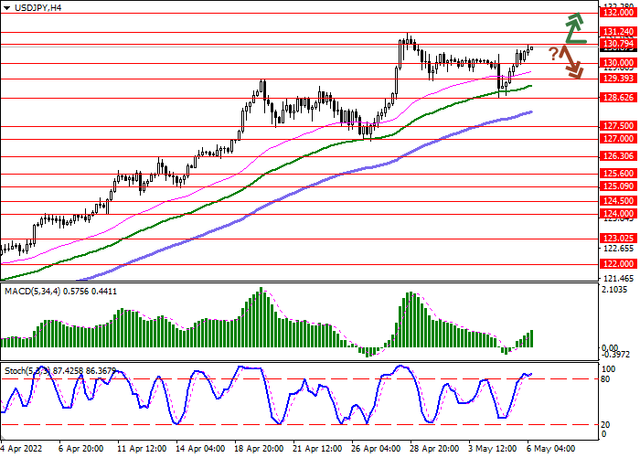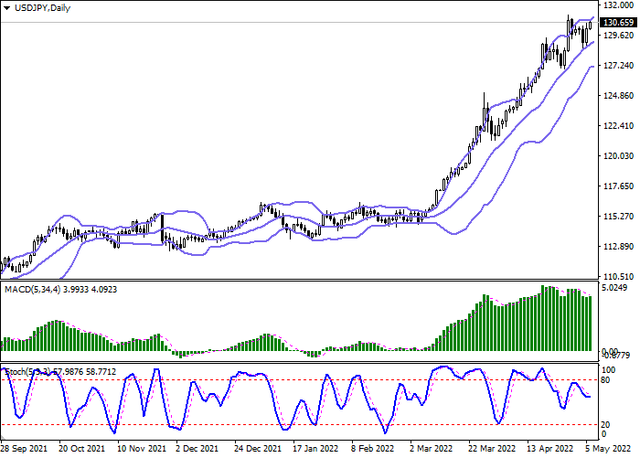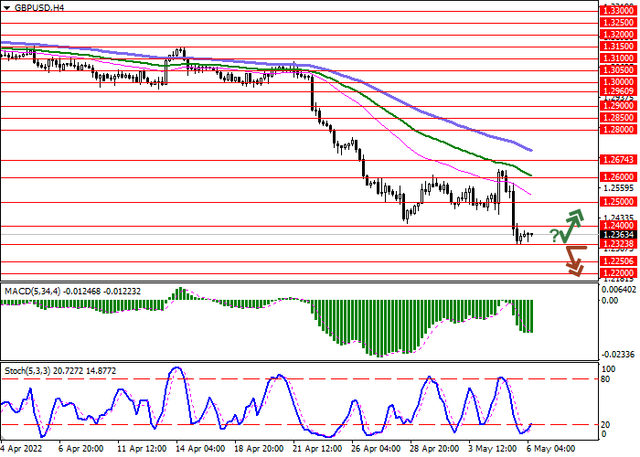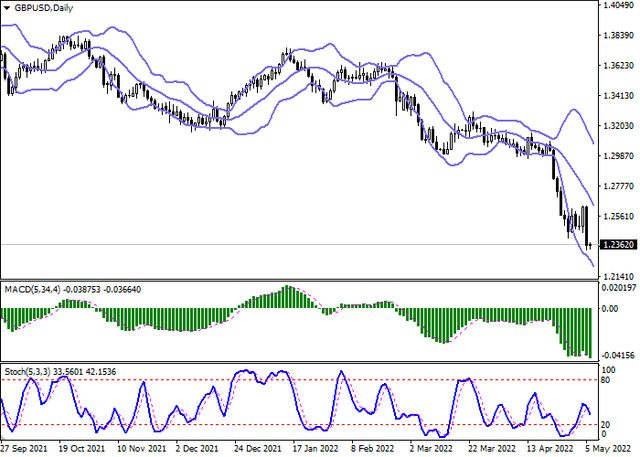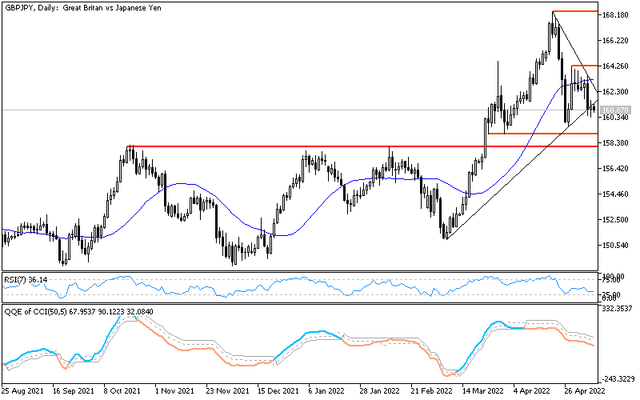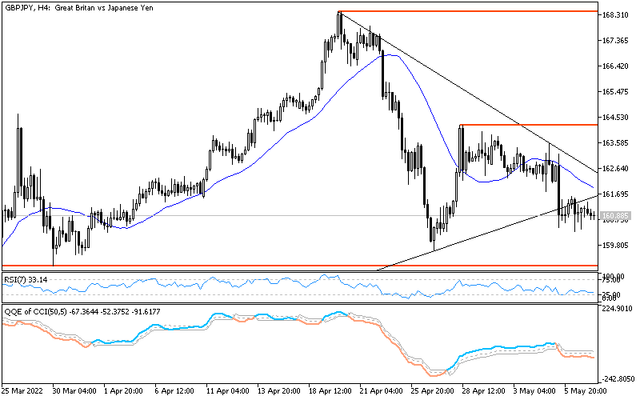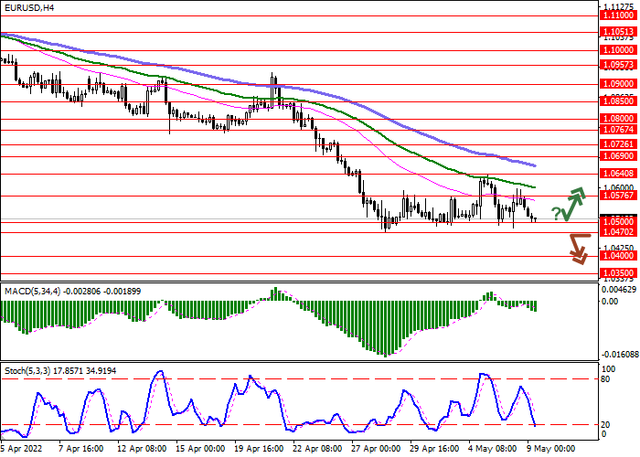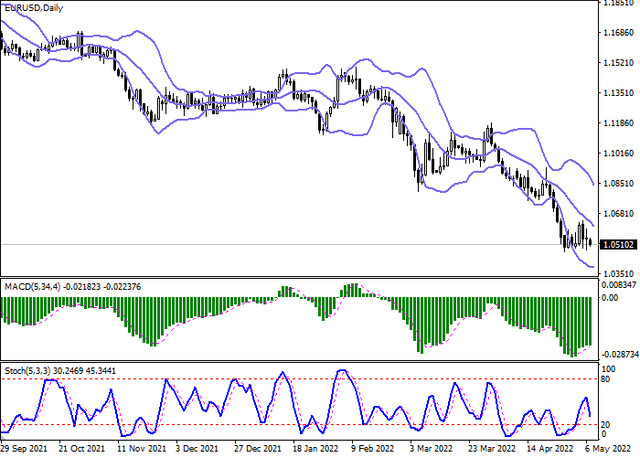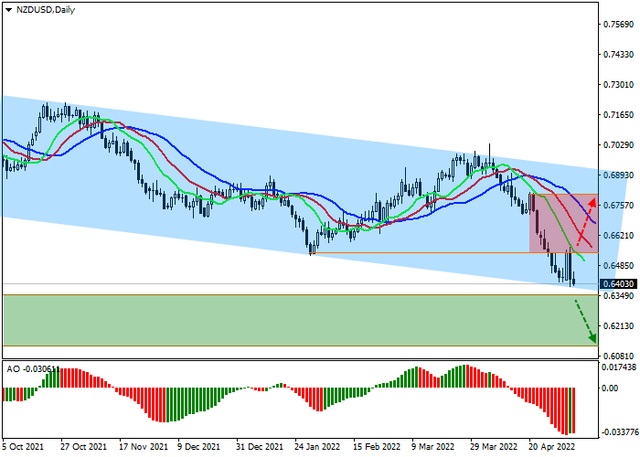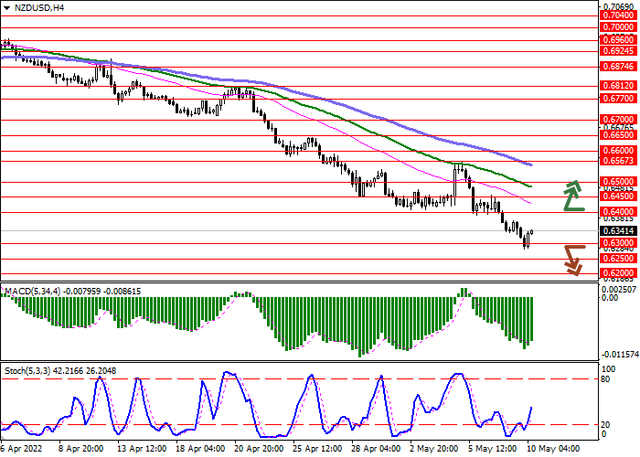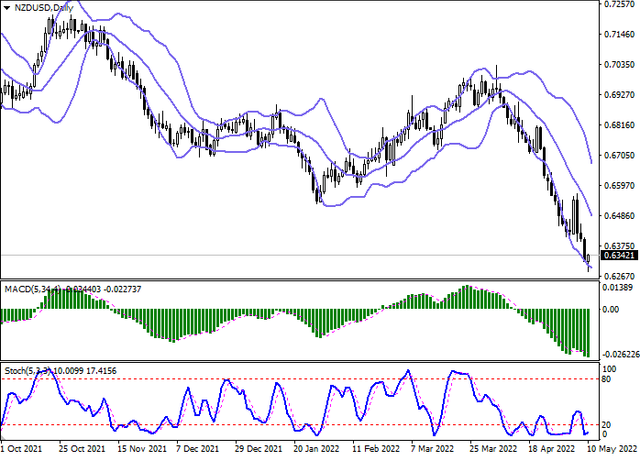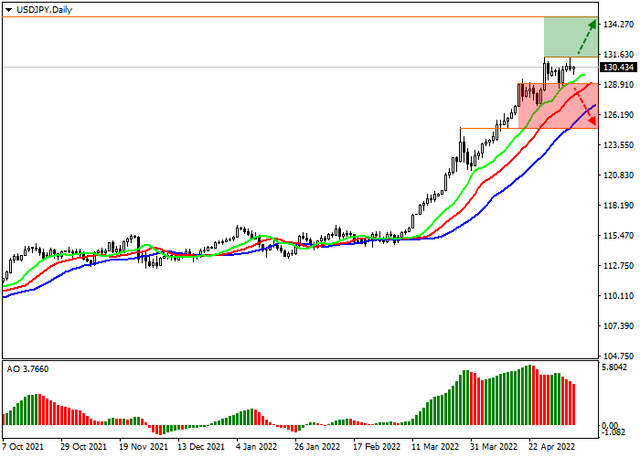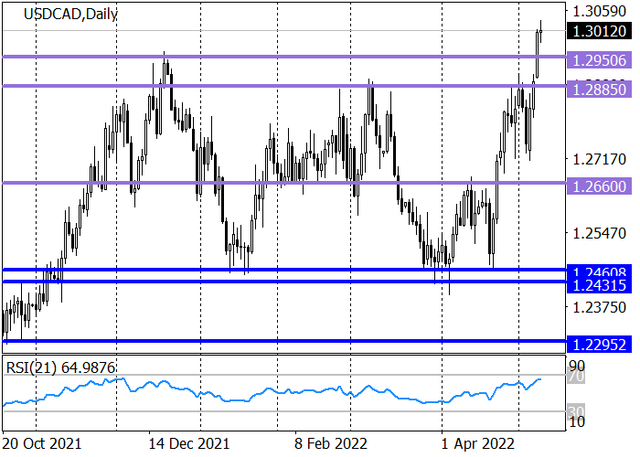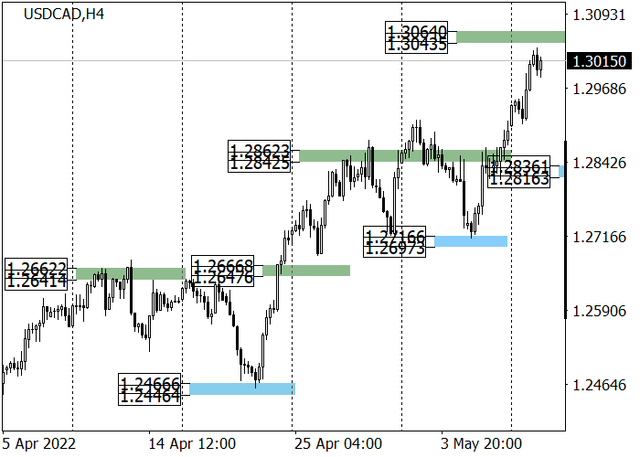SOLIDECN
Senior member
- Messages
- 3,041
- Likes
- 0

The Canadian currency continues to resist the active growth of the US dollar, receiving support after the publication of data on Gross Domestic Product (GDP). At the moment, the quotes of USDCAD are trading in a local uptrend at around 1.2869.
Thus, according to the statistics presented, Canada's economy grew by 1.1% in February, which is the best indicator since March 2021. Experts also note a significant strengthening of the services sectors (by 0.9%) and the production of goods (by 1.5%). Sixteen out of twenty industries grew in this period, and preliminary data show that in March, the country's GDP may continue its positive dynamics and add another 0.5% due to the recovery of the national tourism market, as coronavirus restrictions were significantly eased. More than one million tourists visited Canada in the middle of last month for the first time since the pandemic, according to the Canada Border Services Agency (CBSA). As for the quarterly GDP indicator, the preliminary forecast indicates a possible growth of 1.4%, which may also have a positive impact on the national currency.

Meanwhile, the US dollar is still holding above 103.000 in the USD Index after Friday's release of macroeconomic statistics. The Labor Cost Index in Q1 increased by 1.4% from 1.0%, which exceeded the 1.1% expected by analysts, and the Earnings index rose by 1.20%, having risen by 1.00% a quarter earlier, while the annual Personal Consumption Expenditure Index stood at 6.6 points in March, outperforming February's 6.3 points.
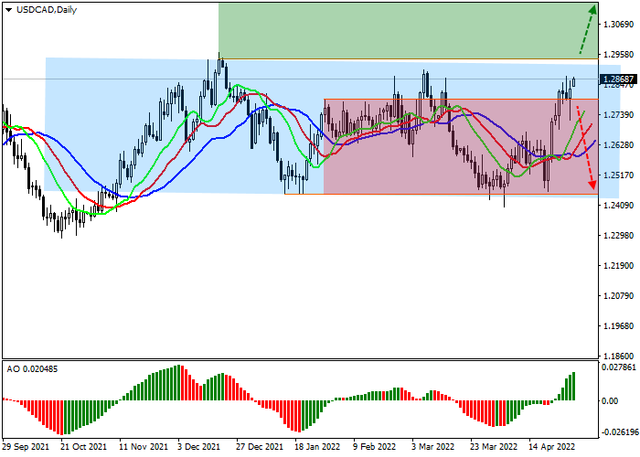
On the daily chart, the price continues to trade within a wide channel, actively approaching the resistance line. Technical indicators are holding a steady signal to open long positions: fast EMAs on the Alligator indicator are above the signal line, and the AO oscillator histogram is forming new ascending bars trading in the buy zone.
Support levels: 1.2798, 1.2448 | Resistance levels: 1.2937, 1.31


